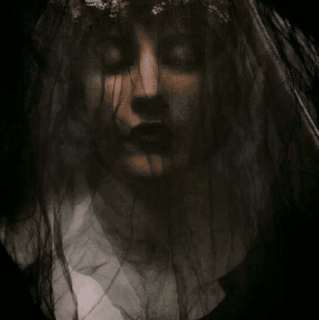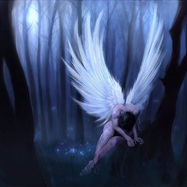


.jpg)
"Winter Blues" (Chivas)
Thematic Images for the Winter Blues or S.A.D. (Seasonal Affective Disorder)






Memes for Winter Blues (SAD) Sufferers







Memes for the Shadow Side of the Winter Blues



Saturn & Melancholy in the Renaissance: Music Therapy for Melancholy
Since the Middle Ages, Saturn has been known as the planet of melancholy and people born under Saturn’s sign ("Saturday’s Child") have been called "Saturnian" or having a "Saturnine Temperament."
"It was Aristotle who first postulated a connection between the melancholic humour and outstanding talent in the arts and sciences. 'All extraordinary men distinguished in philosophy, politics, poetry, and the arts,' he maintained, 'are evidently melancholic.' Thus he gave rise to the belief in the link between genius and melancholy. But the melancholy of such men is a precarious gift, for if the black bile is not properly tempered, it may produce depression, epilepsy, palsy, lethargy and what we would nowadays call anxiety complexes — in a word, although only the homo melancholicus can rise to the loftiest heights, he is also prone to conditions bordering on insanity. . . .
Although the Aristotelian concept of melancholy was never forgotten, the Middle Ages regarded melancholy mainly as a physical disorder and the Church condemned it as close to the vice of sloth (acedia). Not until the late fifteenth century was Aristotle's position newly and fully endorsed. In his De vita triplici (1482-89) Marsilio Ficino showed that melancholy, the ambivalent temperament of those born under the equally ambivalent planet Saturn, was a divine gift, and he, the zealous Platonist, closed the circle by reconciling Aristotle's and Plato's views, for he maintained that the melancholy of great men was simply a metonymy for Plato's divine mania. The Renaissance accepted Ficino's conclusion: only the melancholic temperament was capable of Plato's creative enthusiasm."
~ Christopher L. C. E. Witcombe, "Art and Theory in Renaissance Italy"
Marsilio Ficino, a 15th-century Italian scholar, astrologer and doctor who was one of the most influential humanist philosophers of the early Italian Renaissance, was greatly interested in melancholia. He wrote extensively about it and recommended ways to remedy it, including prescribing music therapy for sufferers. For Ficino, melancholia was specific to intellectuals; scholars, poets and artists.




For some basic scientific facts about SAD, click on pdf file
Thematic Images for the Winter Blues &
the Wyrd (Upside Down) Path of Odin
“Norse mythology hints at Odinic cults, with Odin being worshipped through a combination of ecstatic and seemingly shamanistic rituals. From the eddic poem The Sayings of the High One ( Hávamál ), he is said to have hanged himself in a sacrificial ritual on a tree. Barely surviving this ordeal, Odin gains arcane knowledge, including the use of runes, the ancient Scandinavian alphabet sometimes used for magical purposes. In the poem, Odin chants:”
I know that I hung
on the wind-swept tree
all nine nights
with spear was I wounded
and given to Odin,
myself to me,
on that tree which no one knows
from which roots it grows.
Bread I was not given,
no drink from the horn,
downwards I glared;
up I pulled the runes,
screaming I took them,
from there I fell back again.
(excerpt from Jesse L. Byock's Introduction and Notes, of Sturluson's Prose Edda.)



The Wyrd Path of Odin & the Paradox of Melancholia
The Gypsy Scholar would offer, instead of the conventional wisdom about SAD, some crazy-contrary wisdom that can be gleaned from the Norse mythic narrative about the god Odin.
Given that one of the common complaints of the sufferers of SAD, or the “Winter Blues,” is that they feel all “upside down,” this can be understood as analogous to the existential condition of the Norse god Odin. Odin, a descendant of Saturn (the god of melancholia), is pierced by his own spear and hung upside down from the world tree, the Yggdrasil, for nine days to attain wisdom and thereby retrieve the runes from the Well of Wyrd, which Norse cosmology regarded as the source and end of all mystery and all knowledge. The moment Odin glimpsed the runes he died, however the knowledge of them was so powerful that he immediately returned to life. This dying-and-reborn god had learned eighteen runes and nine songs and he attained the great wisdom from the Well of the Wyrd, but it cost him one eye, leaving him with the one that then looked inward.
Therefore, the moral of the story of Odin: during this Winter Solstice season, when some of us are subject to the seasonal depression of SAD, when we feel ourselves hung upside down, with a feeling of an isolating cold numbness that draws us downward out of life, we can take heart and know that the “darkness” inside is, paradoxically, a necessary way to the light. In other words, it may be that the Odinic crazy wisdom tells us that it is precisely the wyrd, dark places in the psyche—like our depressions—that hold the key to psycho-spiritual transformation. After all, looking at things upside down gives you a new perspective. Does it not? Thus, the Gypsy Scholar would say it's not “tis the season to be jolly,” but rather “tis the season to be melancholy”!

Thematic Images for the Winter Blues Depression






Thematic Images for the Winter Blues Melancholy
It is believed that SAD (Seasonal Affective Disorder) kicks in because of the lack of sunlight in the winter. When the days grow shorter, people tend to become depressed because the lack of sunlight has a physiological effect on their brains, resulting in a dark mood—the Winter Blues.
Going against the grain of the clinical model of S.A.D. or the Winter Blues—and “depression” per se—the Gypsy Scholar advances his own prescription, and doing so in a musical therapy situation (as in the days of the Occult Renaissance, where “Saturn & Melancholy” reigned and music was the prescribed therapy). The GS attempts not to offer a so-called “cure” but rather another way of thinking about the Winter Blues—and “depression” per se—altogether, and thus coping with it in a novel way. The GS argues that the first step in the process of psychic transformation is “going with” and not fighting the depression of the Winter Blues (as is the standard medical prescription), in an attempt to turn clinical depression back to its ancient roots; that is, turn depression into beautiful melancholia.
Melancholy was medically understood in the Renaissance (e.g. The Anatomy of Melancholy) to be both a curse and blessing for poets, artists, and scholars; a blessing because of its power to bestow creativity.
As stated in the musical essay, the GS's musical prescription for the The Winter Blues (S.A.D.) is “the homeopathic principle that like cures like; in other words, fight fire with fire!”
.jpg)
.jpg)
Melancholy (Milton, il Penseroso)
.png)
Melencolia I (Durer engraving 1513–14)

.jpg)
.jpg)
Melancholy (Blake's Illustration to
Milton's “Il Penseroso” c. 1816-20)

.jpg)
Melancholy (Surreal Ats)

Thematic Images for Melancholy, Weeping and Mourning Angels
.jpg)


Thematic Images for Erotic Melancholy or Lovesickness
(Amor Hereos or "Lovesickness" as defined by Burton's Anatomy of Melancholy)

Troubadour Lovesickness
.jpg)
Doctors Visit -The Lovesick (van-Mieris)










"Sad songs make me feel good" ~ Mary Gauthier
Greek, Arabic, and Persian Sources of the Medieval Concept of Erotic Melancholy
Ḥunayn ibn Isḥaq (c. 830 - c. 910)was the most productive translator of Greek medical and scientific treatises in his day. Ishâq was one of the most influential of Arabic physicians to write in melancholia. Large parts of his treatise on melancholy as large parts of his treatise on melancholy—which draws heavily upon the works of Rufus, Galen and Diocles—was rendered into Latin in the eleventh century. Thus, a second important theoretical development in Arabic accounts of melancholy is evident in Ishâq’s claim that the disease can be caused by the loss of a loved person or object. This line of inquiry is where the significant contribution of Muslim physicians can be found; i.e., in the increasingly strong connections made between melancholy and disorders involving the passion of love. Fusing ancient descriptions of melancholic lustfulness with conceptualizations of love as a kind of sickness, philosopher-physicians, such as the Persian Al-Razi and the Arabic Avicenna, elaborated substantial theories of erotic melancholy, which is often referred to by medieval Latin commentators as amor hereos, which is defined as “lovesickness;” the idea that one cannot live without the Beloved one, and this leads him/her to consumption, folly and eventually pining away unto death. It’s in the Middle Ages that the word “hereos” becomes a standard in medical texts. (About the origin of the term amor hereos, in one of the first translations of Arab medical texts where Galen’s doctrines found new life, an h was added and eros became hereos, like heros. Thus, in the same word they had eros and hero, and love sickness became the sickness of “heroic souls,” which then made lovesickness referred to as “heroical love.”) Amor heroes or “heroical love,” then, is a species of melancholy to which lovers are prone.
Thematic Memes for the Winter Blues Melancholy
by the Gypsy Scholar
%20meme.jpg)
%20meme.jpg)










.jpg)





































On Melancholy
“I am as melancholy
as a gib cat or a lugged bear.”
~ William Shakespeare
“So many of the loveliest things in England are melancholy.”
~ Dodie Smith, I Capture the Castle
Why is Melancholy like Honey? Because it is very sweet, and
it is culled from Flowers.”
~ Hope Mirrlees, Lud-in-the-Mist
All changes are more or less tinged with melancholy, for what we
are leaving behind is part of ourselves.
~ Amelia E. Barr
“Nothing brings people together more quickly than shared melancholy.”
~ Milan Kundera, The Joke
“In a world without melancholy, nightingales would start burping.”
~ E. M. Cioran
Thematic Images for the Winter Blues and the "Weeping Goddess"





Thematic Images for Weeping Women

Thematic Images for Cross-Cultural Weeping Monoliths & Figurines

Thematic Images for the Weeping Goddess in Popular Culture


.jpg)

From Game of Thrones


The Gypsy Scholar's musical essay series, "The Winter Blues & Hung Upside Down or Falling Apart: A Musical Prescription for SAD," which served as a lead-up to the annual "Winter Solstice" musical essay, ended with a writer's account of her experience of the "Weeping Goddess" on the Winter Solstice.
This unique, personal account, "Re-Membering Her: The Weeping Goddess," serves to call our attention to the vital importance of this ancient archetype for engaging in the process of grieving toward an integration of the psyche suffering from darkness and depression.
With this aim in mind, the GS has written a paper in which he attempts to set forth a mythic background for which such psychic integration via the archetype of the Weeping Goddess could be facilitated.
The paper consists of four sections. The first, "The Winter Solstice Weeping Goddess: One Winter Blues Sufferer’s Experience ," is a shortened copy of the last section of the "Winter Blues" musical essay that presented Aviva Joseph's experience with a severe case of SAD (enough to give a context to the remainder of the paper for those who didn't hear the musical essay itself). The second section, "The Weeping Goddess, Weeping Deities, & Weeping Saints," presents a brief survey of the various figures from Babylonian, Egyptian, Greek, and Norse mythology who represent the "Weeping Goddess" archetype or are associated with it, including figures from the Christian tradition. The third section, "The Weeping Goddess in Popular Culture," gives a brief accounting of the instances where the Weeping Goddess archetype turns up in contemporary poetry, prose works, and in a TV series. The fourth and final section, "Why the Winter Solstice 'Mourning & Weeping Ritual' Is Important for Our Times," takes the archetype of the Weeping Goddess into consideration during the time of the Winter Solstice for the psychological necessity of mourning, or “grieving,” both for individual and for the collective healing.
The GS thanks Aviva Joseph for the inspiration to reflect on the "Weeping Goddess" and to write this paper.
To access the GS's paper, click on the pdf file



























































































































